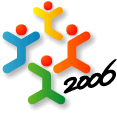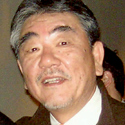

Personal & Mass Transit: The Universal Challenge for Mobility
Patricia A Moore
President, MooreDesign Associates : USA
Whether a person ambulates by placing one foot in front of another, or with the assistance of a wheeled conveyance, moving throughout a house and community presents a myriad of daily challenges.
For the purposes of education, employment, entertainment, home maintenance, personal care, and travel, the role of mobility in our lives translates to the question of independence and the goal of lifelong autonomy.
Achieving accessibility in personal and mass transit is but one side of a coin. In order to meet the need for the creation of an appropriate array of mobility modes to meet the needs of all people, of all ages and abilities, government and industry must embrace the inclusive solution of Universal Design.
This presentation will consider the wants and wishes of the global population and discuss opportunities for innovative design and engineering. Also included will be a range of financial and service considerations, which will assist implementation and utilization of product and environmental efforts. Featured exemplars will include work from: Boeing, Japan Airlines, Kinkisharyo, and Toyota.

Universal design of the Fukuoka Municipal Nanakuma Subway line -- aiming to create a subway that would be user-friendly for everyone.
Toshimitsu Sadamura
President & CEO, GA-TAP Corp. : Japan
The Fukuoka Municipal Nanakuma Subway Line is a new line that opened in February 2005. We developed the total design including the subway stations and equipment, subway cars, signs and rail yards. The design project began in 1995, ten years before the line opened, but the first year was used to conduct various surveys and thoroughly investigate the line’s users. From this we learned that use of the subway was constrained by two types of barrier. The first was a “movement barrier” and the second was an “information barrier.” “People who experience difficulty moving,” include senior citizens, pregnant women, people accompanied by children, and people with bags or packages as well as physically handicapped people. “People who experience difficulty conveying and receiving information” include people with impaired sight or hearing, mentally impaired people, senior citizens and people from overseas. With this project, we developed numerous designs and systems to realize a subway that would be user-friendly for everyone. In this presentation, I will report on the following six categories of designs.
- Making the path lines used universal
Wheelchair users and senior citizens can use the shortest path lines at all stations. - Making equipment universal
Complete UD has been realized in facilities such as ticket vending machines, elevators, ticket wickets and toilets. - Making passageways universal
Spaces have been constructed in such a way as to make dark confined underground spaces feel pleasant. - Assigning symbols to spaces to facilitate displaying information
Important places such as entrances, exits and ticket vending machines use the area encompassing them to convey information. - Information displays that make stations distinguishable
Stations have been made distinguishable through the use of color, station symbols and the materials used for wall surfaces, etc. - Making signs universal
A sign system using sound to assist visually impaired people has been realized.
